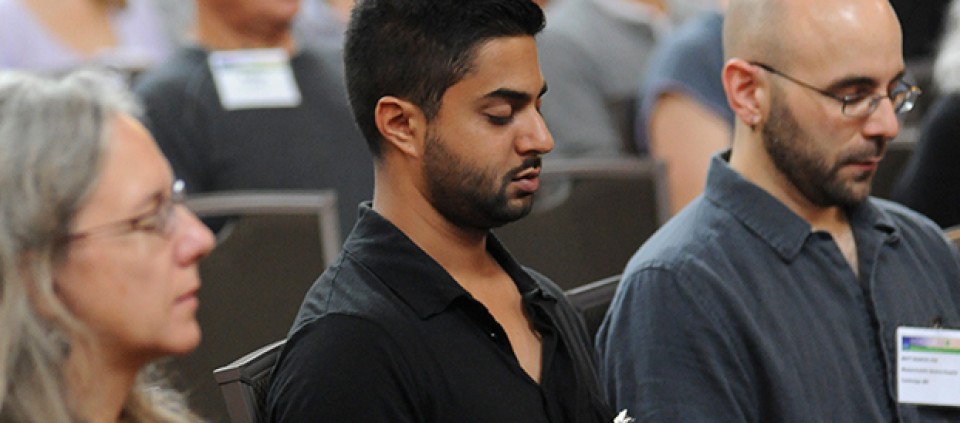Mindfulness for a Happier, Healthy Brain—and Life

Daniel J. Siegel, a clinical professor of psychiatry at the UCLA School of Medicine, has taken the Buddhist practice of mindfulness, or awareness, and tied it to the science of the brain.
As a medical student, Dan found that his professors taught medicine as if the mind didn’t exist. Frustrated by the lack of integration in his studies, he dropped out of medical school. During that year off, he began to crystallize what he was searching for: a scientific way to show that the mind is real, and a holistic approach to understanding our inner life of feelings, stories, and emotions.
This inquiry is what Dan calls “interpersonal neurobiology,” a multidisciplinary approach to healing anxiety, depression, trauma, and troubled relationships. “If someone has anxiety or a worry, they try and push it away. But trying to push it away makes the feeling stronger,” Dan says. “We try and rid ourselves of things we don’t like, but that actually reinforces the habit.”
Our nervous system and brain function in a similar way, he says. The brain will develop certain pathways and integrative fibers based on repetitive patterns. Dan says that when people have PTSD or a psychiatric disorder, examination of the brain makes it clear that these integrative fibers are not working cohesively. His research, and that of others in the field, shows that the brain’s pathways can either be reinforced, or those integrative fibers can become damaged due to trauma. “Mindfulness is helping grow integrative fibers of the brain,” Dan says.
Lack of integration among the mind, body, and brain causes chaos and rigidity, and that affects our mental and physical health. For Dan, these are inextricably linked.
After two decades of research, writing, and seeing patients, Dan incorporated his findings into a practice that he calls a metaphoric Wheel of Awareness. The entire practice takes about 20 minutes and is much like a mindfulness meditation, in which the individual taps into their awareness through a guided visualization.
Incorporating all the tenets of interpersonal neurobiology, the practice starts with the five senses and then a scan of the body, allowing participants to reconnect slowly and deeply with their physical being, from their face down to their toes. The awareness is then turned inward to thoughts, longings, and beliefs. The final segment explores how we relate to family, friends, and community. Dan even designed a “wheel” for his office—a glass table with wooden spokes for the rim—where his patients can sit in order to make the practice tangible.
“When I would offer this Wheel of Awareness practice, I noticed my patients started getting better,” Dan says. He also does the practice regularly. Ultimately, he says, it’s an invitation to focus on the moment.
Find out about programs with Daniel J. Siegel at Kripalu.
© Kripalu Center for Yoga & Health. All rights reserved. To request permission to reprint, please e-mail editor@kripalu.org.